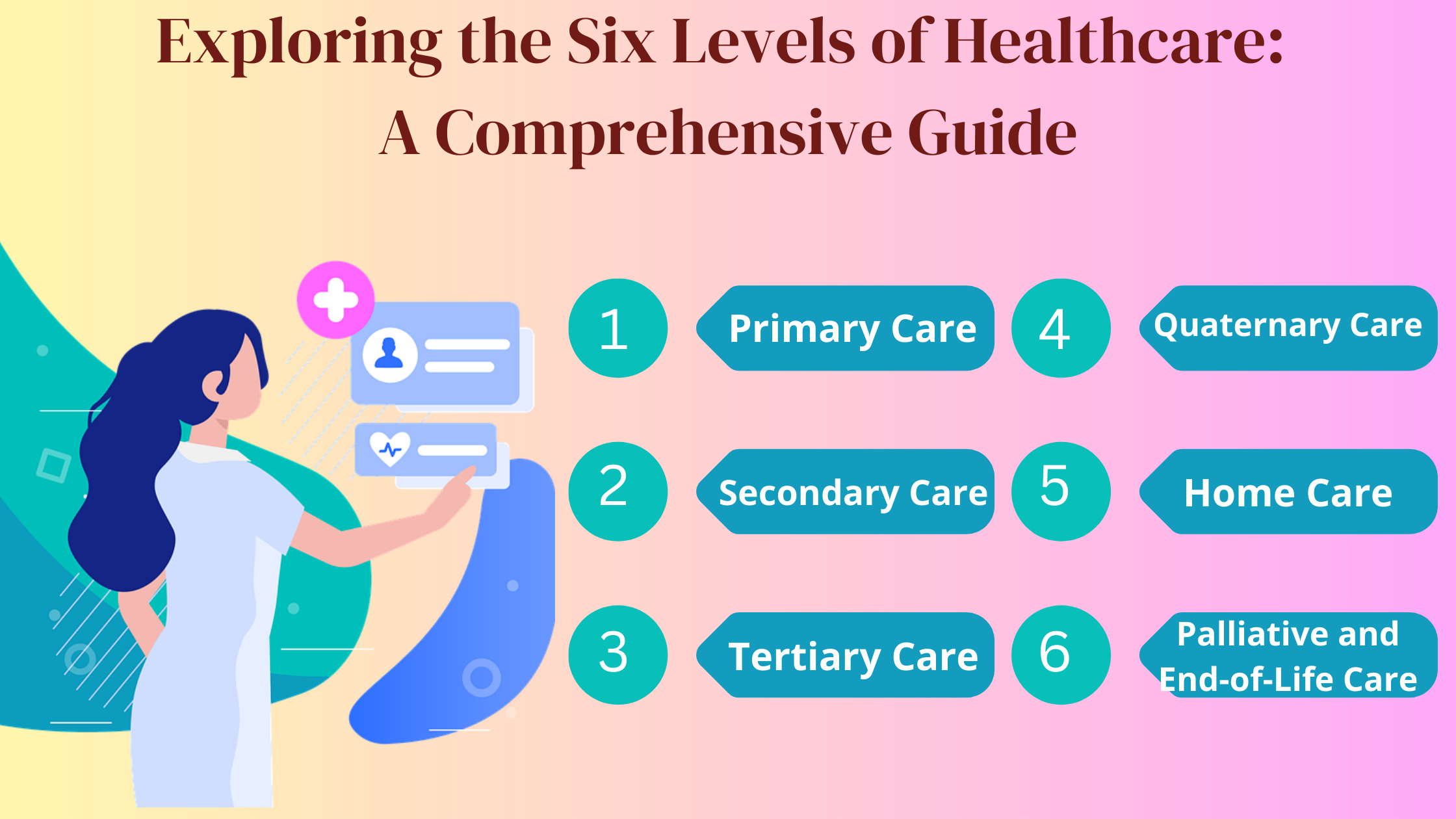The healthcare system is a complex network of various levels that work together to provide comprehensive medical care to individuals and communities. Understanding the different levels of healthcare is crucial for navigating the system, accessing appropriate care, and ensuring timely treatment. In this comprehensive guide, we will explore the six levels of healthcare, from primary care to quaternary care, to help you gain a deeper understanding of how the system operates.
Table of Contents
- Introduction
- Primary Care
- Secondary Care
- Tertiary Care
- Quaternary Care
- Home Care
- Public Health Care
- Conclusion
- FAQs
1. Introduction
The six levels of healthcare provide a continuum of services that range from routine preventive care to highly specialized treatments. Each level has its own unique focus and plays a crucial role in maintaining and improving the health of individuals and populations.
2. Primary Care
Primary care serves as the foundation of the healthcare system and is usually the first point of contact for individuals seeking medical care. Primary care providers, such as general practitioners, family physicians, and pediatricians, provide routine medical services, preventive care, and basic treatments. They assess and manage common health problems, offer vaccinations, perform health screenings, and refer patients to specialists when necessary.
3. Secondary Care
Secondary care involves specialized medical services that are more focused and complex than primary care. It is often provided in a hospital or specialized clinic setting. Secondary care providers include specialists such as cardiologists, orthopedic surgeons, and dermatologists. They diagnose and treat specific conditions, perform surgeries, and provide ongoing management for chronic diseases. Referrals from primary care providers are typically required for access to secondary care services.
4. Tertiary Care
Tertiary care is highly specialized and provided by medical experts who focus on complex and rare conditions. It is delivered in specialized hospitals or tertiary care centers equipped with advanced technology and expertise. Tertiary care providers include neurosurgeons, oncologists, and transplant surgeons. They offer advanced diagnostic procedures, cutting-edge treatments, and comprehensive management of complex medical conditions that often require multidisciplinary care.
5. Quaternary Care
Quaternary care represents an even higher level of specialized care that is often research-based and experimental. It involves highly advanced and innovative medical interventions and procedures. Quaternary care providers are at the forefront of medical knowledge and work in specialized research institutions or academic medical centers. They are involved in clinical trials, experimental treatments, and the development of new therapies and technologies.
6. Home Care
Home care encompasses the provision of healthcare services within the confines of a patient’s residence. It encompasses a range of services, including nursing care, physical therapy, and assistance with daily activities for individuals who are unable to leave their homes due to illness, disability, or advanced age. Home care aims to promote independence and enhance the quality of life for individuals in their familiar environment.
7. Public Health Care
Public health care focuses on the health of populations rather than individual patients. It involves promoting and protecting the overall health of communities through disease prevention, health promotion campaigns, epidemiological surveillance, and health education programs. Public health initiatives target factors that affect the health of populations, such as immunization campaigns, sanitation practices, and health policy development.
8. Conclusion
Understanding the six levels of healthcare is vital for individuals to navigate the healthcare system effectively. Primary care serves as the first point of contact, while secondary care provides specialized services. Tertiary care caters to complex conditions, and quaternary care involves cutting-edge research and experimental treatments. Home care supports individuals in their homes, and public health care focuses on the health of communities. By recognizing the different levels and their roles, individuals can access appropriate care and make informed decisions about their health.
FAQs
Q1: Do I need a referral from a primary care provider to access secondary or tertiary care?
Yes, in many healthcare systems, referrals from primary care providers are required to access specialized care at the secondary and tertiary levels. This helps ensure appropriate and coordinated care.
Q2: Can I receive primary care services from a specialist?
Primary care services are typically provided by general practitioners or family physicians. However, in some cases, individuals may receive primary care services from specialists, particularly in specialized clinics or specific healthcare models.
Q3: Are all medical conditions treated at the tertiary and quaternary levels?
Tertiary and quaternary care primarily focus on complex and rare conditions that require specialized expertise and advanced interventions. Common and less complex conditions are typically managed at the primary and secondary levels.
Q4: What types of services are provided in home care?
Home care services can include nursing care, physical and occupational therapy, medication management, wound care, and assistance with daily activities such as bathing and meal preparation.
Q5: How does public health care differ from primary care?
Public health care focuses on promoting and protecting the health of populations through disease prevention, health promotion, and surveillance. Primary care focuses on individual patient care and managing common health problems.
By familiarizing yourself with the different levels of healthcare, you can better navigate the system, seek appropriate care, and make informed decisions about your health and well-being.



